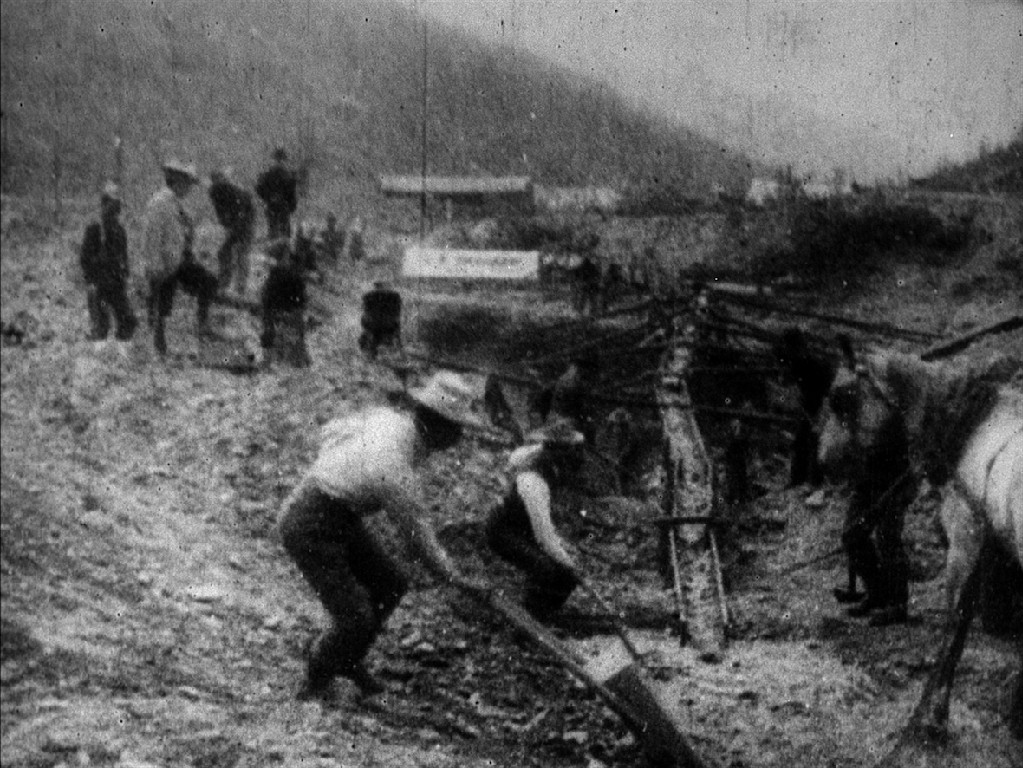
Contributed by Jonathan Stevenson / A somewhat film-nerdy set of historical facts gave rise to found-footage maven Bill Morrison�s extraordinarily artful and expansive documentary Dawson City: Frozen Time. Dawson City, Yukon Territory, was the Klondike Gold Rush�s quintessential boomtown, over the course of two years swelling in population from 500 to 40,000 in 1898. Within another couple of years the number dropped to 8,000 as the surge of prospectors wound down along with the drinking, gambling, and whoring. Whitehorse displaced Dawson as the territorial capital in 1952. On a historical scale, the city seemed like a flash in the pan.
After the gold rush, residents of isolated Dawson came to crave movies as a means of learning about the wider world. In the early twentieth century, the town was the terminus of a long distribution chain, originating in the United States, for silent films. It was uneconomic for the distribution company to pay for return freight, so the three Dawson theaters disposed of the reels by dumping them in the Yukon River, buried them, or stored them. Early nitrate-based film was a chemical variant of a military explosive, extremely unstable, and prone to spontaneous combustion; hundreds of silent movies were lost to warehouse fires. In 1978, when Dawson City had dwindled to less than a thousand inhabitants, construction excavation uncovered some 500 films, most believed to have perished forever, that had been preserved in permafrost.

The movies themselves are interesting enough, but what Morrison does with the recovered footage is cinematic alchemy. Interspersing it with contemporaneous newsreels and archival footage of local goings-on, he constructs nothing less than the notional emotional life of Dawson City out of what�its citizens must have watched. Big-stage events like World War I, the �Black Sox� World Series-rigging scandal of 1919, and labor agitation, and local ones like the cruel displacement of the aboriginal First Nations camp by the settlement of the town and the building of the Dawson Amateur Athletic Association, cue dreamily allusive scenes from recovered silent melodramas and westerns, their age and wear reflected in nitrate dissolution.
The bulk of the movie is an extended black-and-white montage with no voice-over or speaking of any kind save for a line or two from a �talkie� � just occasional captions and a mesmerizing, grimly elegiac musical score that seems to mark and mourn the passage of time. Dawson City: Frozen Time unfolds like a somber tone poem, and leaves a lump in the throat. The exact source of that lump is a little obscure. It is perhaps not so much Dawson, whose little vector of history is serendipitously celebrated in the documentary itself, but instead all the other remote outposts that have not been so lucky in posterity, having come and gone unsung.
Dawson City: Frozen Time, 2016.�A�film by�Bill Morrison. Hypnotic Pictures and Picture Palace Pictures�in association with La Lucarne/ARTE and the Museum of Modern Art, New York.�Produced by Bill Morrison and Madeleine Molyneaux (U.S).
Related posts:
Ideas and Influences: Brece Honeycutt
Art and Film: Kelly Reichardt�s stoic women
















